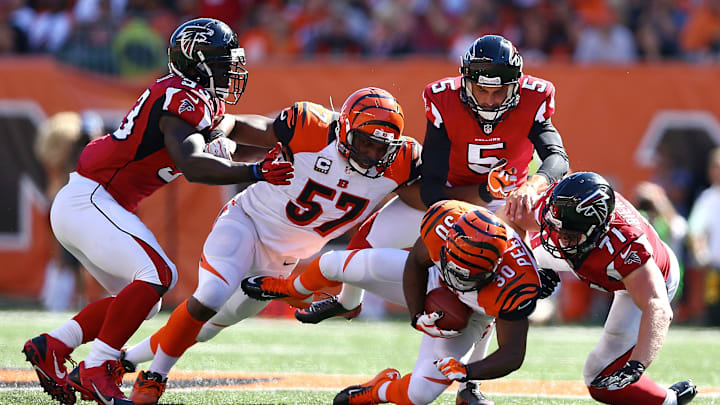For those not as familiar with the rules of the NFL, when teams line up for an onside kick, or a team executes an onside kick without the other team expecting it, some might wonder what just happened.
The point of an onside kick is for the team who just had possession and scored to attempt to regain possession of the ball. It sounds easy enough but the kicking team trying to attempt an onside kick is tricky.
Let's go over the rules.
What are the rules of an onside kick?
The biggest rule for an onside kick is that the ball must go 10 yards before the kicking team can attempt to recover it. This isn't the rule for the opposing team, who can recover the ball before it hits the 10-yard mark.
If the kicking team recovers the ball before it goes 10 yards, they get a penalty and the other team gets possession of the ball. If the ball happens to touch a member of the receiving team, the ball is considered live and then the kicking team can attempt to recover it.
While most of the time, onside kicks are attempted near the end of the game when the losing team is trying to desperately get the ball back, there are times when teams will try onside kicks in other situations. It's a risky move to do this, though, because if they fail (and it's hard to execute an onside kick with ease), the other team gets the ball deep into the kicking team's territory to start.
One of the most famous instances of a team being brave enough to attempt an onside kick in a key moment was when the New Orleans Saints pulled it off in Super Bowl XLIV against the Indianapolis Colts. They shocked the world with an onside kick to start the second half, recovered the football, and the rest is history.
Onside kicks aren't something football fans see all the time but it's important to know the rules for when your team does try one.
